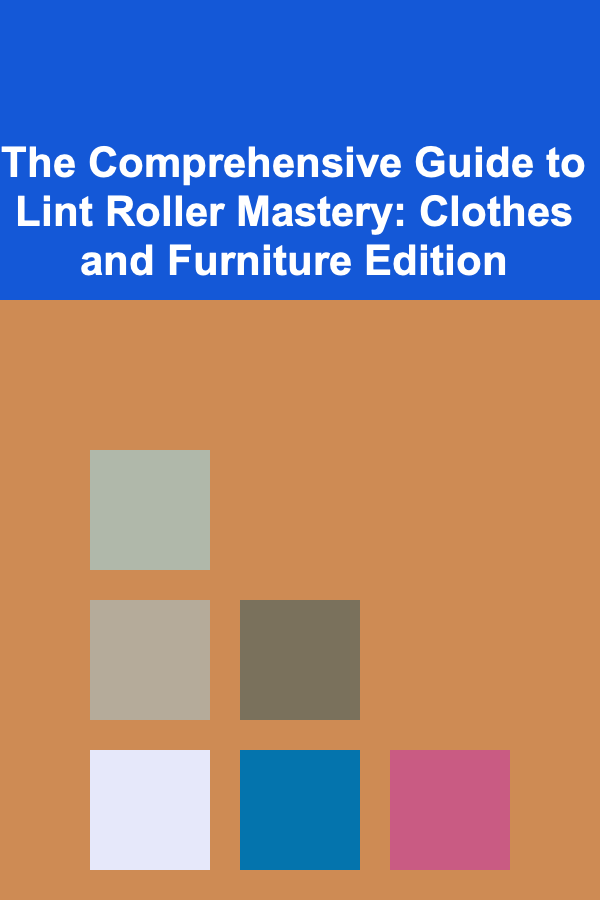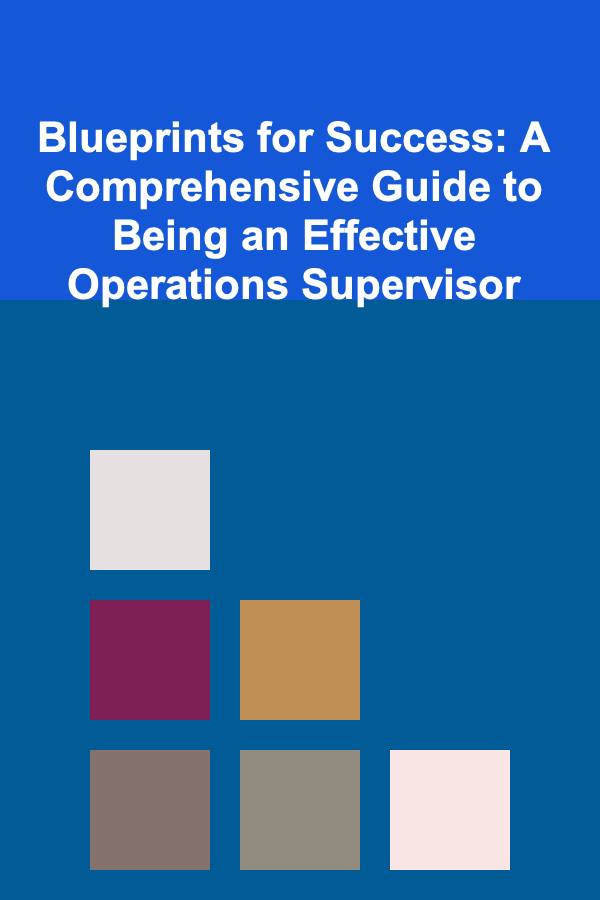
The Comprehensive Guide to Lint Roller Mastery: Clothes and Furniture Edition
ebook include PDF & Audio bundle (Micro Guide)
$12.99$10.99
Limited Time Offer! Order within the next:

In the relentless battle against stray hairs, lint, dust, and other unwelcome particles, the humble lint roller emerges as a champion. Often overlooked but perpetually reliable, this seemingly simple tool can dramatically improve the appearance of your clothes and furniture, saving you time, money, and the embarrassment of walking around with visible debris clinging to your attire. This guide goes beyond the basics, exploring the nuances of lint roller usage for optimal results and extending the lifespan of your garments and upholstery.
Understanding the Lint Roller: A Deeper Dive
Before diving into the techniques, let's clarify what a lint roller is and the science behind its effectiveness. A typical lint roller consists of a cylindrical cardboard or plastic core wrapped in adhesive paper or fabric. As the roller is moved across a surface, the adhesive lifts and captures loose fibers, dust, pet hair, and other debris.
Types of Lint Rollers
While the basic principle remains the same, lint rollers come in various forms:
- Standard Adhesive Lint Rollers: These are the most common type, featuring disposable adhesive sheets. Once a sheet becomes saturated with lint, it's peeled away to reveal a fresh, clean layer. They are generally inexpensive and readily available.
- Reusable Lint Rollers: These rollers often utilize a sticky silicone or rubber surface that can be cleaned with water or a damp cloth. They are a more sustainable option, eliminating the need for constant sheet replacements. However, they may not be as effective on certain materials compared to adhesive rollers.
- Electric Lint Shavers/Removers: While not strictly lint rollers, these battery-operated devices utilize rotating blades to gently shave off pills, fuzz, and larger debris from fabrics. They are particularly effective on sweaters and other knitted items.
- Mini/Travel Lint Rollers: Compact versions of standard adhesive rollers, ideal for carrying in a purse, briefcase, or luggage for on-the-go touch-ups.
- Lint Brushes: These use a directional nap of fabric to lift lint. You brush in one direction to attract the lint and then brush in the opposite direction to deposit it into a collection area.
The Adhesive Factor: Why it Works
The key to a lint roller's success lies in its adhesive. The adhesive is formulated to be strong enough to lift unwanted particles without damaging delicate fabrics. The stickiness is a carefully calibrated balance. Too weak, and it won't pick up lint. Too strong, and it could leave residue or even pull on the fibers of your clothing. The best lint rollers use adhesives that are gentle on fabrics yet powerful enough to remove even stubborn pet hair.
Lint Rolling Clothes: Mastering the Technique
Lint rolling clothing seems straightforward, but employing the right techniques can significantly improve results and prolong the life of your lint roller.
Before You Start: Preparation is Key
Before grabbing your lint roller, consider these preliminary steps:
- Choose the Right Roller: For delicate fabrics like silk or lace, opt for a lint roller with a gentler adhesive. For thicker materials like denim or wool, a standard adhesive roller should suffice. Avoid using overly sticky rollers on fine fabrics.
- Check for Loose Threads: Before rolling, carefully inspect your garment for any loose threads or embellishments. A lint roller could potentially snag these, causing damage. Trim any loose threads with scissors before proceeding.
- Lay Flat or Hang: For best results, lay your garment flat on a clean surface or hang it on a hanger. This provides a stable surface and allows you to target specific areas effectively.
The Rolling Action: Precision and Efficiency
The key to effective lint rolling is using smooth, consistent strokes:
- Start at the Top: Begin at the top of the garment (e.g., collar, shoulders) and work your way down. This prevents dislodged lint from falling onto previously cleaned areas.
- Use Overlapping Strokes: Overlap each stroke slightly to ensure complete coverage. Don't leave any gaps, as this can result in uneven cleaning.
- Apply Even Pressure: Apply consistent, moderate pressure. Pressing too hard can damage delicate fabrics or leave adhesive residue. Pressing too lightly may not effectively pick up lint.
- Target Specific Areas: Pay close attention to areas that tend to accumulate more lint, such as shoulders (especially if you have long hair), collars, cuffs, and the back of garments (especially if you have pets).
- Roll in One Direction: While not always necessary, rolling in one direction can sometimes improve effectiveness, particularly on textured fabrics. Experiment to see what works best for your garment.
Dealing with Stubborn Lint and Pet Hair
Sometimes, lint or pet hair can be particularly stubborn. Here are some tips for tackling these challenging situations:
- Dampen the Roller: Slightly dampening a cloth and gently wiping the lint roller's adhesive surface can sometimes improve its stickiness. Be careful not to saturate the roller, as this could damage the adhesive.
- Use Multiple Strokes: For heavily soiled areas, repeat the rolling action several times, using fresh sections of the adhesive sheet each time.
- Try a Different Angle: Sometimes, changing the angle at which you roll can help lift stubborn particles. Experiment with different angles to see what works best.
- Consider a Specialized Tool: For pet hair, consider using a specialized pet hair remover tool, such as a rubber brush or a lint roller specifically designed for pet hair. These tools often have textured surfaces that are more effective at grabbing pet hair.
- Static Cling: Static cling can make lint removal more difficult. Use a static guard spray on the garment before rolling to neutralize static electricity.
Fabric-Specific Considerations
Different fabrics require different approaches:
- Delicate Fabrics (Silk, Lace, Chiffon): Use a lint roller with a very gentle adhesive or a reusable silicone roller. Test a small, inconspicuous area first to ensure the roller doesn't damage the fabric. Avoid excessive pressure.
- Wool and Knitwear: Wool and knitwear are prone to pilling. Use a lint shaver/remover to gently remove pills. A standard lint roller can be used for loose lint, but avoid excessive rolling, as this can exacerbate pilling.
- Denim and Corduroy: These sturdy fabrics can generally withstand standard adhesive lint rollers. However, be mindful of any embellishments or details that could be snagged.
- Velvet and Suede: Use a specialized velvet brush or a gentle adhesive lint roller. Brush or roll in the direction of the nap to avoid damaging the fabric's texture.
- Dark Fabrics: Lint is more visible on dark fabrics. Roll dark garments in good lighting to ensure you don't miss any spots.
Maintaining Your Lint Roller for Optimal Performance
Proper maintenance will extend the life of your lint roller and ensure optimal performance:
- Store in a Clean, Dry Place: Store your lint roller in a clean, dry place to prevent dust and debris from accumulating on the adhesive surface.
- Replace Sheets Regularly: Replace adhesive sheets as soon as they become saturated with lint. Using a full sheet will only spread the lint around.
- Clean Reusable Rollers: Clean reusable silicone or rubber rollers with water and mild soap after each use. Allow them to air dry completely before storing.
- Inspect for Damage: Periodically inspect your lint roller for any damage, such as cracks or loose parts. Replace the roller if necessary.
Lint Rolling Furniture: Reviving Your Upholstery
Lint rollers aren't just for clothes; they can also be incredibly effective for cleaning furniture upholstery. From sofas and chairs to car seats and curtains, a lint roller can quickly remove dust, pet hair, crumbs, and other debris, leaving your furniture looking fresh and clean.
Assessing the Upholstery
Before you begin, consider the type of upholstery you're dealing with:
- Fabric Type: Similar to clothing, different upholstery fabrics require different approaches. Delicate fabrics like velvet or silk require gentler lint rollers or brushes. More durable fabrics like microfiber or canvas can typically withstand standard adhesive rollers.
- Level of Soiling: Assess the level of soiling. If the upholstery is heavily soiled with stains or embedded dirt, a lint roller alone may not be sufficient. You may need to pre-treat the area with a fabric cleaner or consider professional upholstery cleaning.
- Presence of Pet Hair: If you have pets, pet hair is likely a major concern. Specialized pet hair remover tools or lint rollers designed for pet hair may be more effective.
The Furniture Lint Rolling Process: A Step-by-Step Guide
Follow these steps for effective furniture lint rolling:
- Vacuum First: Before using a lint roller, vacuum the upholstery thoroughly to remove loose debris. This will prevent the lint roller from becoming clogged quickly and will improve its overall effectiveness. Use a crevice tool to reach tight spaces and corners.
- Choose the Right Roller: Select a lint roller that is appropriate for the upholstery fabric. For delicate fabrics, use a gentle adhesive roller or a reusable silicone roller. For more durable fabrics, a standard adhesive roller should suffice.
- Work in Sections: Divide the furniture into manageable sections. This will help you stay organized and ensure that you don't miss any areas.
- Use Overlapping Strokes: Use smooth, overlapping strokes to cover each section. Apply consistent, moderate pressure.
- Pay Attention to Crevices and Seams: Use the edge of the lint roller to reach into crevices and seams, where dust and debris often accumulate.
- Change Sheets Frequently: Change adhesive sheets frequently as they become saturated with lint. Using a full sheet will only spread the lint around.
- Repeat as Needed: Repeat the rolling process as needed until the upholstery is clean and free of lint and debris.
Specific Upholstery Considerations
Different types of upholstery may require specific techniques:
- Velvet: Use a specialized velvet brush or a very gentle adhesive lint roller. Brush or roll in the direction of the nap to avoid damaging the fabric's texture.
- Leather: Lint rollers can be used on leather upholstery to remove dust and debris. However, avoid using overly sticky rollers, as they could damage the leather's finish. Test a small, inconspicuous area first. A slightly damp cloth may also work well.
- Microfiber: Microfiber is generally durable and can withstand standard adhesive lint rollers. However, avoid using harsh chemicals or abrasive cleaners on microfiber, as this could damage the fabric.
- Couch Cushions: Remove couch cushions and lint roll both sides. Also, lint roll the area underneath the cushions where crumbs and debris often collect.
- Car Seats: Lint rollers are excellent for car seats, especially for removing pet hair and crumbs. Pay attention to the seams and crevices.
Beyond the Lint Roller: Complementary Cleaning Techniques
While lint rollers are effective for removing surface debris, they are not a substitute for thorough cleaning. Consider these complementary cleaning techniques:
- Vacuuming: Vacuuming is essential for removing loose debris and embedded dirt. Vacuum upholstery regularly, using appropriate attachments for different fabric types.
- Spot Cleaning: Address stains promptly with a fabric cleaner designed for the specific type of upholstery. Test the cleaner in a small, inconspicuous area first to ensure it doesn't damage the fabric.
- Steam Cleaning: Steam cleaning can effectively remove dirt, stains, and allergens from upholstery. However, it's important to follow the manufacturer's instructions and to use a steam cleaner that is specifically designed for upholstery.
- Professional Upholstery Cleaning: For heavily soiled or delicate upholstery, consider professional upholstery cleaning. Professional cleaners have the expertise and equipment to safely and effectively clean a wide range of fabrics.
Tip: Keep a lint roller handy in your car. It's perfect for quickly cleaning up car seats and dashboards.
Caution: Avoid using excessive force when lint rolling delicate fabrics. You could damage the fibers.
Extending the Life of Your Clothes and Furniture: Preventative Measures
The best way to combat lint and debris is to prevent them from accumulating in the first place. Here are some preventative measures you can take:
- Regular Cleaning: Regularly clean your clothes and furniture to remove dust, dirt, and other debris before they have a chance to accumulate.
- Proper Storage: Store clothes and furniture properly to protect them from dust and debris. Use garment bags for delicate clothing and cover furniture when it's not in use.
- Pet Grooming: If you have pets, groom them regularly to reduce shedding.
- Air Purifiers: Use air purifiers to remove dust and allergens from the air.
- Fabric Protection Sprays: Consider using fabric protection sprays on furniture to help repel stains and dirt.
Conclusion: Embracing the Power of the Lint Roller
The lint roller, often underestimated, is a powerful tool for maintaining the appearance of your clothes and furniture. By understanding the different types of lint rollers, employing the right techniques, and taking preventative measures, you can effectively combat lint, dust, pet hair, and other debris, keeping your belongings looking their best and extending their lifespan. So, embrace the power of the lint roller and say goodbye to unsightly lint and debris!

Blueprints for Success: A Comprehensive Guide to Being an Effective Operations Supervisor
Read More
How to A/B Test Geotargeted Ads for Your Dropshipping Store
Read More
How to Organize Your Bills to Avoid Late Fees
Read More
How to Use the Power of Compound Interest in Your Investment Strategy
Read More
How to Explore Quasars and Active Galactic Nuclei
Read More
How to Save for a Down Payment on Anything
Read MoreOther Products

Blueprints for Success: A Comprehensive Guide to Being an Effective Operations Supervisor
Read More
How to A/B Test Geotargeted Ads for Your Dropshipping Store
Read More
How to Organize Your Bills to Avoid Late Fees
Read More
How to Use the Power of Compound Interest in Your Investment Strategy
Read More
How to Explore Quasars and Active Galactic Nuclei
Read More